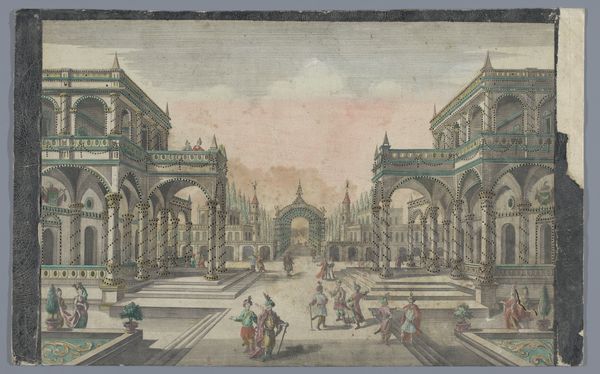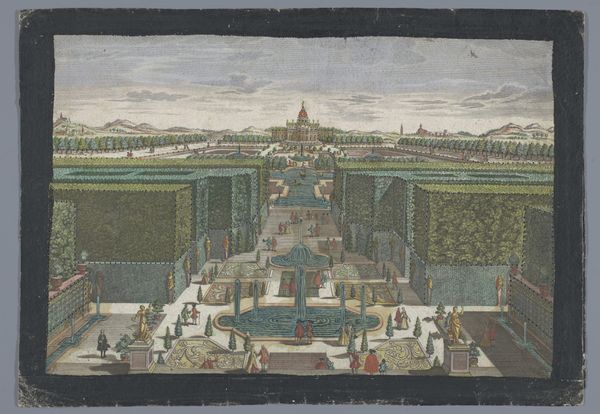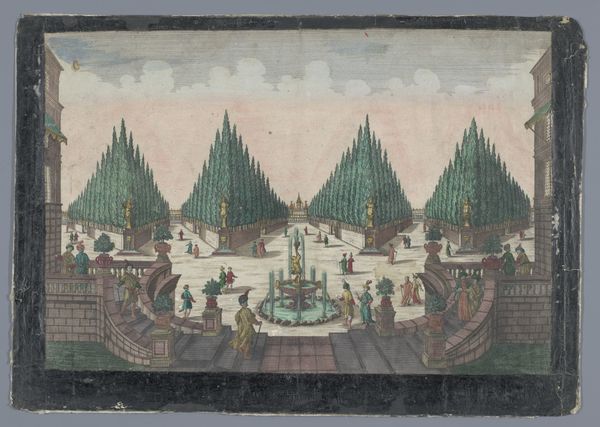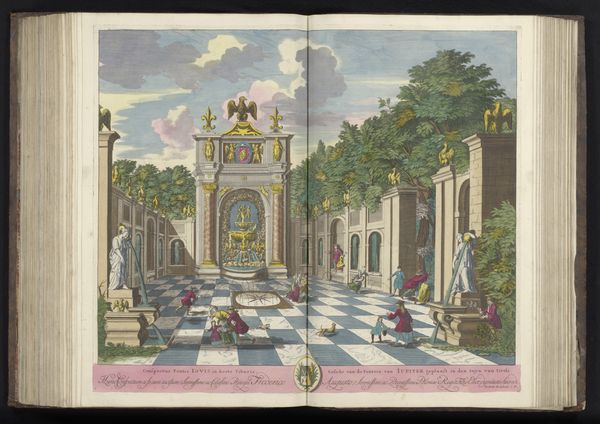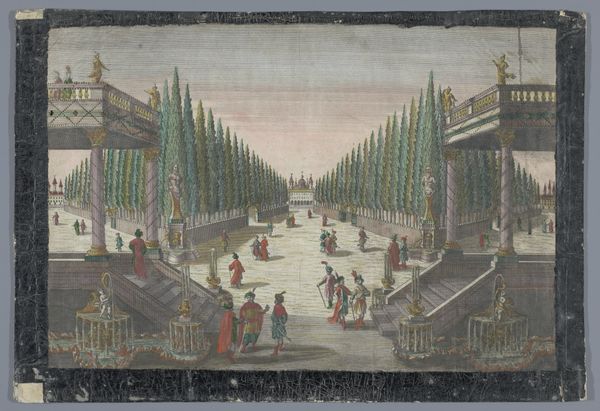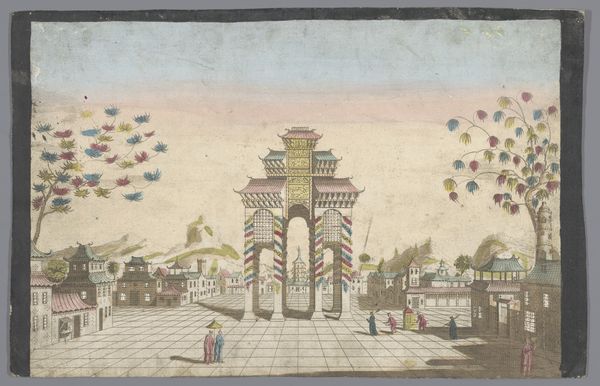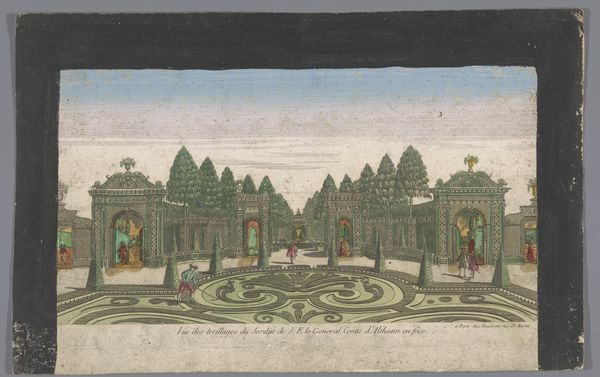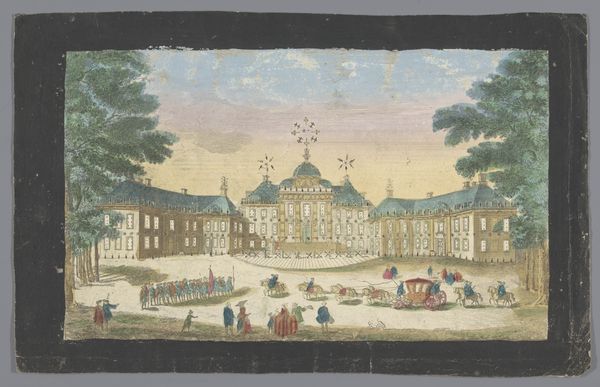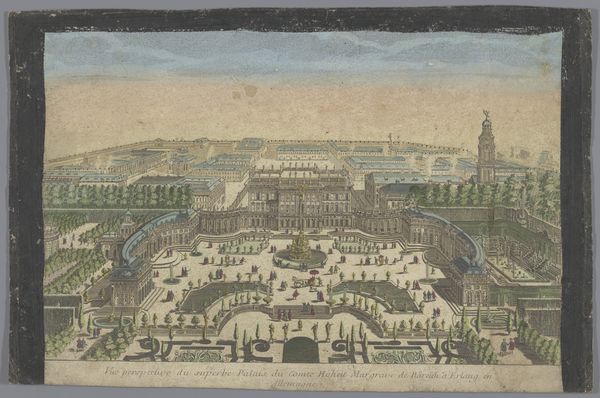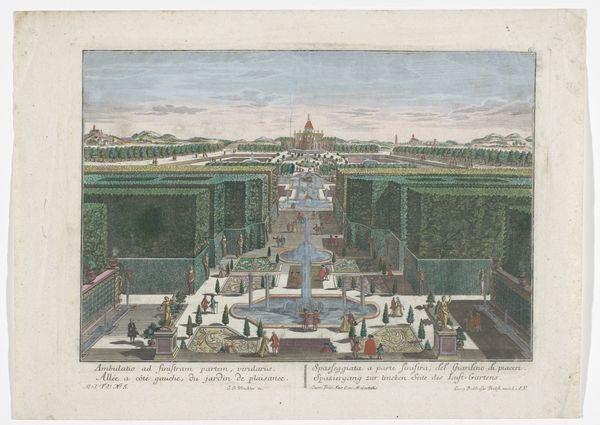
Gezicht op een zuilengalerij richting een cipressentuin te Constantinopel 1742 - 1801
0:00
0:00
Dimensions: height 295 mm, width 443 mm
Copyright: Rijks Museum: Open Domain
Editor: So, here we have "View of a colonnade towards a cypress garden in Constantinople," a watercolor and print by Georg Balthasar Probst from the late 18th century, currently held at the Rijksmuseum. It feels almost theatrical, doesn't it? The architecture is so precise, the figures are staged, and the whole scene seems to beckon you into a dream. What jumps out at you when you see this piece? Curator: Well, the 'Orientalism' is pretty loud, isn't it? It's like a stage set for someone's fantasy of Constantinople – a city I suspect the artist never actually set foot in. I can almost smell the spices and hear the tinkling music from a bazaar that probably exists only in the imagination. How can you tell that someone actually went there or didn't? Do the local people act real, or like caricatures? What are the tells, do you think? Editor: That’s a great point! The figures do seem somewhat… generic, maybe? Less like real people and more like placeholders in a grand architectural rendering. Curator: Exactly! And those receding lines of cypress trees and the rather baroque structures…it’s less about representing reality and more about constructing a picturesque ideal, an image carefully curated for a European audience. I bet this hung in some gentleman’s study, fuelling his dreams of exotic travel. What do you feel when you look at it? Editor: It feels a little... voyeuristic, now that you mention it. Like we're peering into a world filtered through a very specific lens. Almost like a colonial fantasy on paper. Curator: Indeed. The play of light and shadow is quite lovely, though, isn't it? Notice how it enhances the drama. Makes it look "true", somehow... And those colonnades… they almost seem to echo back into some infinite other world behind us. Perhaps he did feel something true for all the false notes in it. It's a dream after all... Editor: I’m seeing this with a new set of eyes now! It's less a depiction of a place and more of an insight into the European imagination of the time. Curator: Precisely. Art often tells us more about the artist and their audience than it does about the subject itself. Food for thought, eh?
Comments
No comments
Be the first to comment and join the conversation on the ultimate creative platform.
